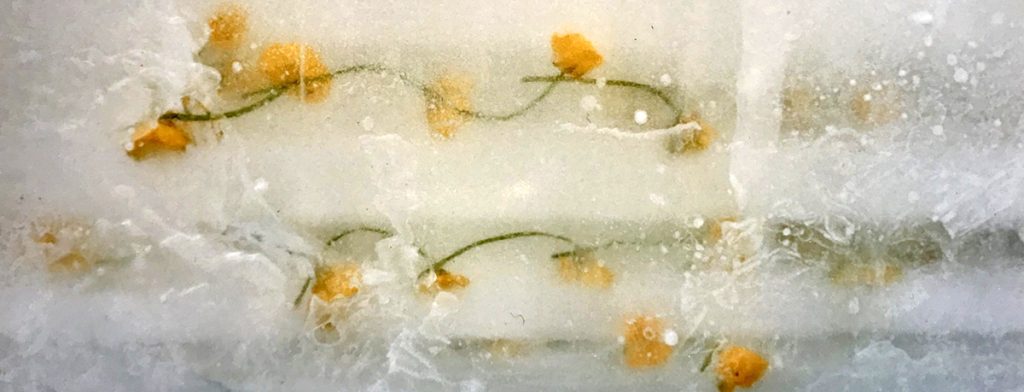
At a family wedding I bump into long-lost cousin Jane. She’s great. She’s always been into plants and stuff. If I called her a tree-hugger, she would smile and say “Well, yes, I hug the occasional tree! What’s wrong with that?” I ask her if she is still doing her “art.” She fumbles for a smart phone deep in the pockets of her dress. Scrolling through numerous images, she speaks rapidly and with passion. She takes me on a whistle-stop tour of her decades-long creative trajectory. I am captivated. Yes, Jane Thewlis is definitely still doing her “art.” I ask myself why I have not written before about her, her love of nature, her concern for the environment and her beautiful stuff.

“I’ve recently learnt the basics of silversmithing. I’m doing mixed media jewelry pieces.” she says. I notice her necklace. I needn’t ask. It’s her work. The piece is charming, natural and original.
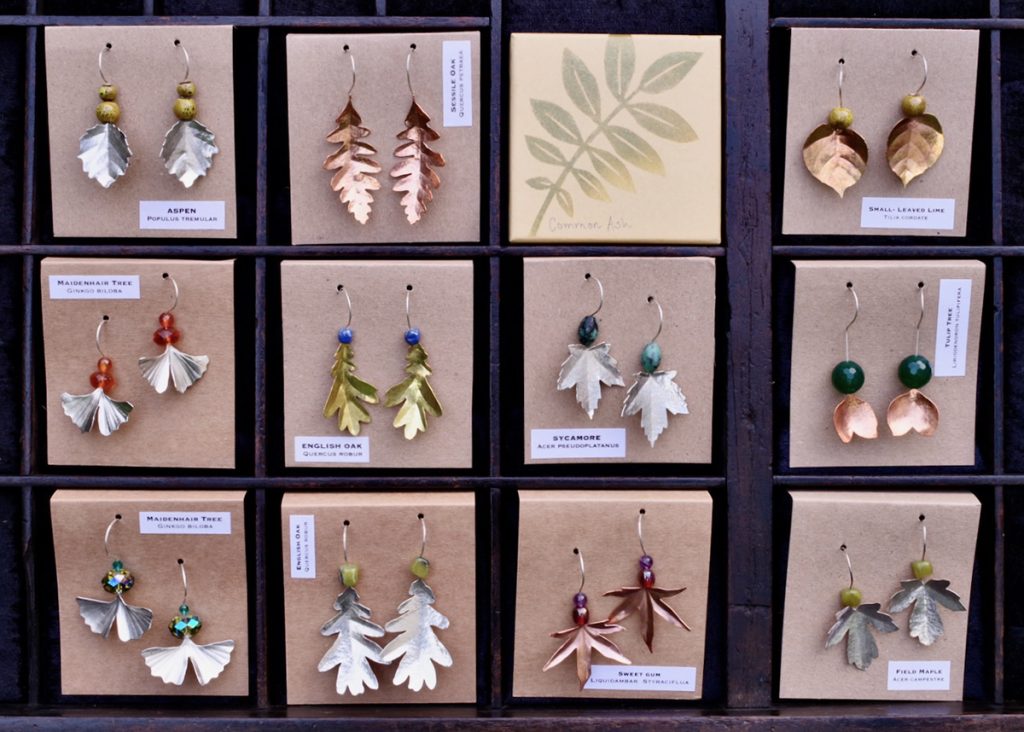
Jane’s seed and leaf-based jewelry is stunning. She uses traditional hand tools for mark-making on the silver, copper or brass of each unique piece. The beads comprise peat-free compost, sand and leaves, along with recycled old beads. This beautiful stuff sells. Cambridge University Botanic Garden Shop was the first to take it in stock. Demand is high. Have a look at Jane’s business – “All About Leaves.”
“All About Leaves” follows an extraordinary career in which she has won awards and commissions for her plant-themed installations. She studied textile art in the early nineties at the Winchester School of Art. The death of her parents at this time led her deeper into nature. She would collect all manner of plant matter. A day walking in a forest would finish with experimental stitching and sewing of leaves with other materials such as pine needles. By her own admission, she has always done things differently.
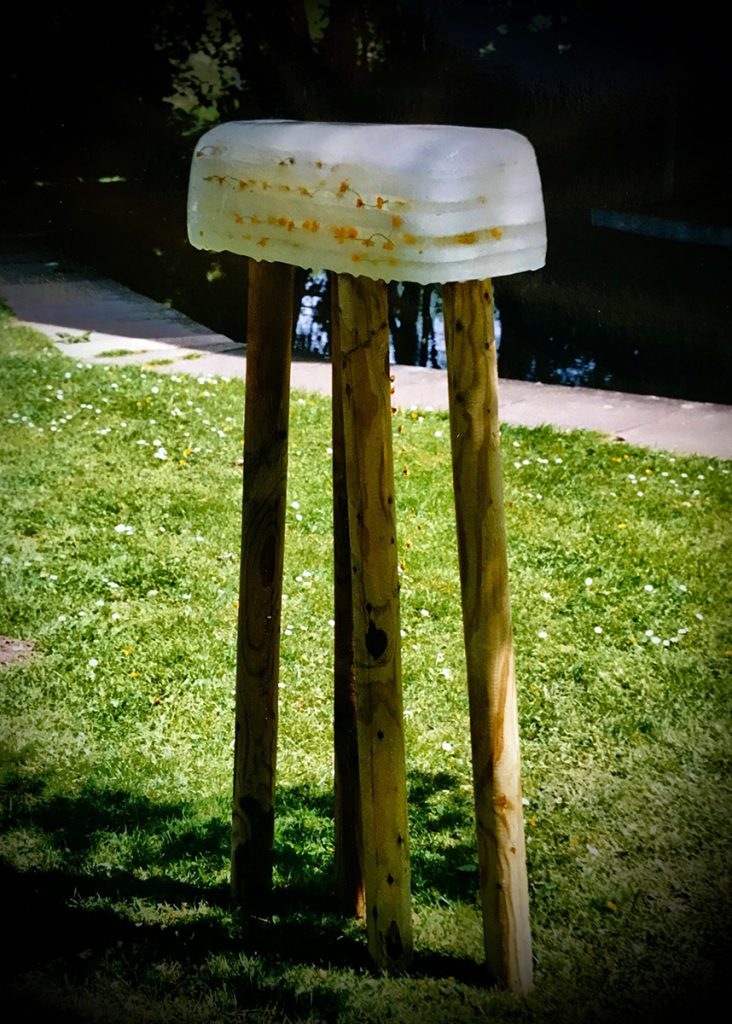
During her final year at Winchester, she won sponsorship from Sainsbury’s who delivered enormous blocks of ice to the College early in the mornings of her degree show week. Each day, she made delicate buttercup chains and laid them between layers of ice. They froze perfectly. On thawing, the flowers decayed and the puddle formed by dripping water brought worms up onto the grass. A couple of blackbirds caught on and regularly fed around the work. Unsurprisingly, for her, this represented one life dying and another thriving.

On leaving college, she won her first commission for Milton Country Park in Cambridgeshire. She pine-needle-stitched together hundreds of delicately torn sycamore leaves. This “textile” was then wrapped around four willow poles to create “Sycamore Enclosure.” Soil was removed from the earth below and the ground lined with clay and soot in reference to 18th century dew ponds. The hollow was filled with water so creating a surface for reflection. Visitors could look into the water and observe the inner aspects of the piece. Over fourteen days, the leaves turned from green to a reddish orange and the whole started to fall apart. Jane emphasizes that at some point her ephemeral works are always removed. It’s important to her that they are never seen as litter.
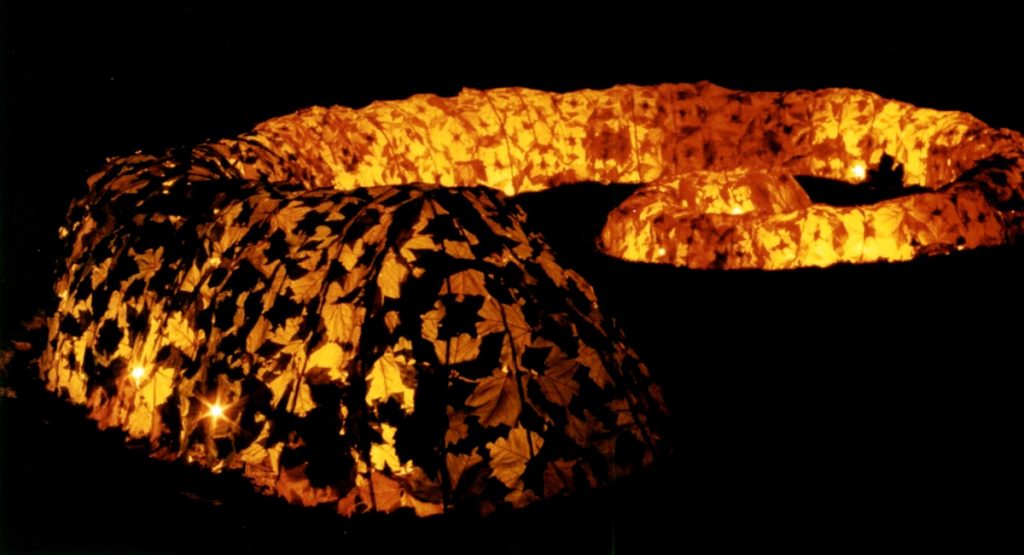
“Illuminated Spiral” was commissioned for National Tree Week. It was inspired by the Fibonacci sequence: the mathematic series that determines the natural spiral growth pattern of, for example, ferns and pine cones. The Fibonacci sequence was used to plot a willow framework covered in plane tree leaves stitched together – again – with pine needles. Turf beneath the piece was removed and the ground lined with sand. Sixty small candles embedded in the sand cast light upwards onto the leaves. Jane smiles as she remembers how the spiral flickered throughout the night of the event. A huge photograph of ‘Illuminated Spiral’ was chosen as the centre-piece for the launch of a “Year of the Artist” project at the Wellcome Institute.
When I ask about the source of her motivation, she cites a childhood in which she was encouraged to be resourceful. She remembers the ground floor of the family home being inundated by an exceptional rain storm. Rather than calling the fire brigade, her father got her and her brother making little sail boats from walnut shells and paper with plasticene as ballast. When the flood eventually subsided, she spent hours in the garden making mud pies and decorating them with leaves and berries. Still a child at a family Christmas dinner, she was told to be quiet when asking where the turkey’s head and feet were. This made her determined never to eat meat again. In her teens, she realised that a healthy diet did not necessarily include dairy produce. She became vegan. This was a choice that made her question every aspect of her life and has since infused her creative force.
Early influences include Kurt Jackson, Richard Long, Andy Goldsworthy and traditional textile work from Rajasthan. Her jewelry is a nod to Lalique and the Dogon in West Africa.
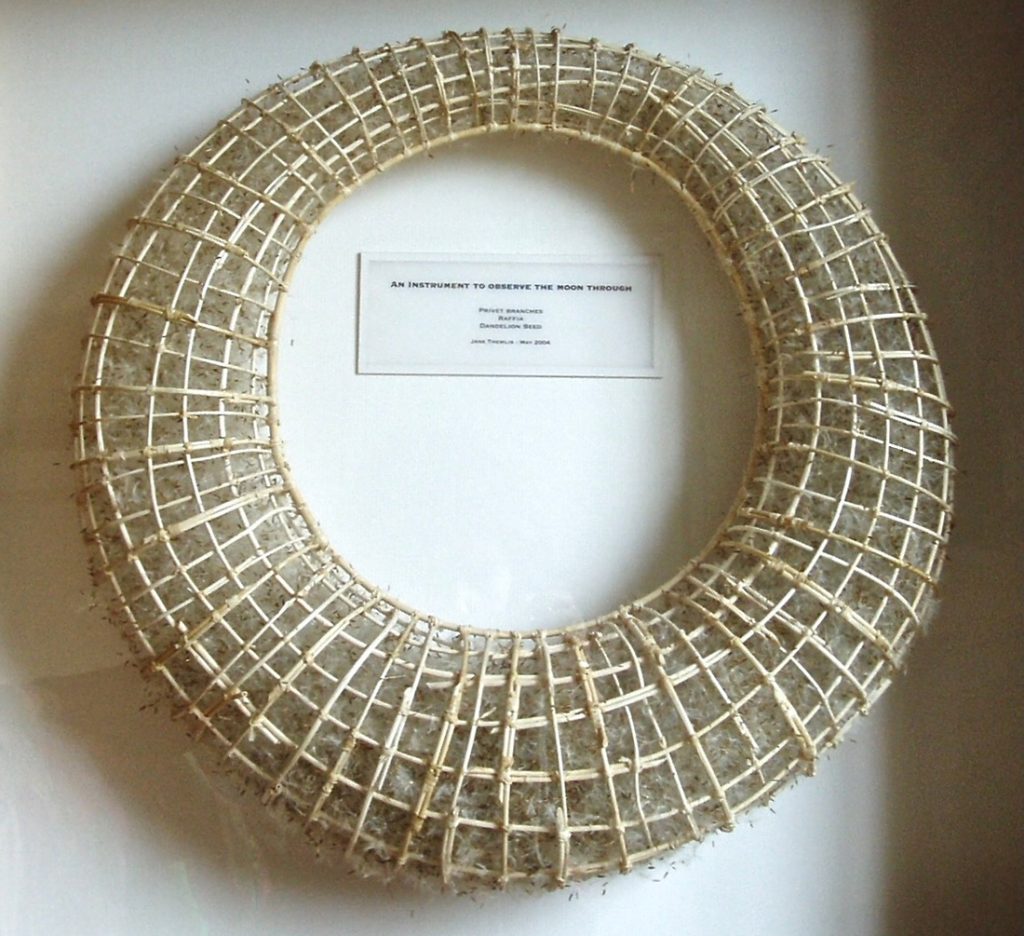
The piece that for me sums up everything about Jane is “An Instrument to Observe the Moon Through.” Just how did she conceive of the idea that looking at the moon though a hoop made from privet withies and filled with dandelion seeds was a more enriching experience than simply looking at the moon? I imagine that the instrument – when held in the right position in relation to the night sky – would make for a sort of heavenly-cubist-lunar halo. Jane tells me that the piece was created in honour of the Ladies of Llangollen; a celebrated 19th century couple who eloped from Ireland and set up a home in North Wales. The “Instrument” rests in the Denbighshire Collection.
It’s impossible not to admire what Jane creates without also admiring her values. The beautiful stuff and the person go together like, well, love and marriage, a horse and carriage, tofu bangers and mash or peaches and cashew-based cream. Get it? On returning home to Geneva, I find myself in a nearby park. I stop by a handsome Scot’s pine. With Jane’s work still in mind, I brush a cheek against the chunky bark and smell the sap. Nobody’s around. I lean in and wrap my arms around the trunk.

Great article about Cuz, Bro’.